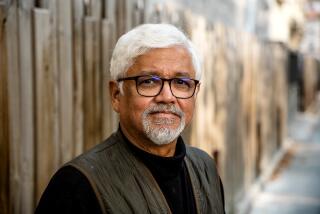Valium had many ancestors
For thousands of years, humans have sipped, swallowed and chewed endless remedies to soothe frayed nerves: fermented ales in medieval Europe, coca tea and tobacco in the ancient Americas, and kava kava concoctions in the South Pacific, to name a few. For the last century or so, with varied success, researchers have tried to perfect the packaging of anxiety relief into a simple little pill.
In the 1800s in the U.S. and Europe, an apparent epidemic of neurasthenia, or “weakness of the nerves,” was attributed by doctors to the stresses of fast-paced, modern, urban living. (It was, after all, the era of the steam engine.) At the bedside, doctors prescribed bromide salts (to replace lost salts thought to be at the root of over-excited nerves), paraldehyde (which induced sleep -- and bad breath), and often even opiates. Meanwhile in the lab, doctors tried to come up with something better.
Around 1900, German scientists working for the drug company Bayer synthesized the first synthetic barbiturate sedative. Soon barbiturates were being used to treat seizures in epileptics and to calm troubled, shellshocked soldiers.
But treating anxiety with barbiturates was a bit like pushing a tack into a wall with a sledgehammer. Barbiturates depressed the entire nervous system, slowed thinking, impaired movement and induced sleep. They came with a high risk of dependence and were easy to overdose on -- all of which inspired research into gentler alternatives.
The first of the gentler sedatives -- the so-called minor tranquilizers -- was developed in the early ‘50s by a New Jersey drug firm, Wallace Laboratories. The power of the drug, named Miltown (Wallace was fond of naming drugs for nearby Jersey towns), was demonstrated in experiments on monkeys: On barbiturates, the primates were unconscious; undrugged, they were their wild selves; on Miltown, they were calm but awake.
Demand for Miltown was unexpected and unprecedented. Millions of Americans begged their doctors for prescriptions. By 1957, a prescription for Miltown was filled an average of every second in the U.S.
Suburbs became the site for Miltown parties, cocktails were named for the pill (a Miltown replaced the olive in a Miltini) and high-end jewelers designed rings with compartments to hold the “tranks.” The “peace pills” were particularly popular in Hollywood, and television host Milton Berle joked on-air (and uncompensated by Wallace) that he was considering changing his name to Miltown.
Miltown revealed such an enormous market for minor tranquilizers that pharmaceutical companies scrambled to develop competitors. In 1960, Swiss drug maker Hoffmann-La Roche unveiled Librium, less sedating than Miltown but just as calming. In one famous experiment, the bitter-tasting drug tamed lions and tigers at the San Diego Zoo.
But Roche also had another drug in the works. Three years later, it rolled out Valium.
Valium quickly surpassed Miltown and Librium. Among its biggest selling points: no bitter taste, and it was nearly impossible to overdose on. (In one widely reported instance that came much later, a Reagan administration official tried to kill himself with a heavy dose of Valium but failed.)
By the end of the 1960s, Valium was the top-selling psychotropic drug in the country. In the ‘70s, it became the most widely prescribed drug of any kind. Like Miltown, Valium was everywhere: Mike Brady popped a couple on the television show “The Brady Bunch,” and the Rolling Stones composed an ode to the drug, dubbing it “mother’s little helper.”
But at the height of its popularity, Valium became the target of critics who argued that people were becoming unhealthily dependent on the drug. The story of Barbara Gordon further eroded Valium’s image. The television journalist’s 1979 autobiography chronicled her addiction to Valium and the nervous breakdown -- and institutionalization -- she suffered when quitting the drug.
Jordan’s story, “I’m Dancing as Fast as I Can,” was made into a movie in 1982, the same year that Valium lost its coveted position as the bestselling drug in America.
Valium was replaced that year by the anti-ulcer drug Tagamet -- which perhaps signaled a new approach to anxiety altogether.
Doctors still write prescriptions for Valium today, but newer anti-anxiety drugs, such as Xanax and Ativan, are more commonly used. And increasingly, anxiety is treated with antidepressants. The top-selling drug these days is Lipitor, which perhaps suggests that these days, Americans are more concerned with their arteries than their nerves.
--






